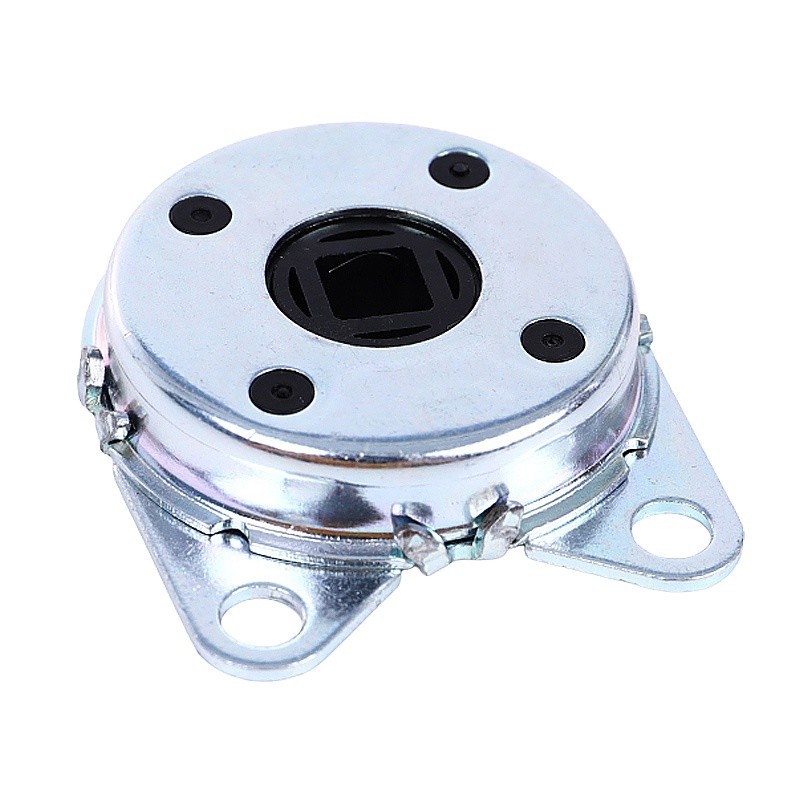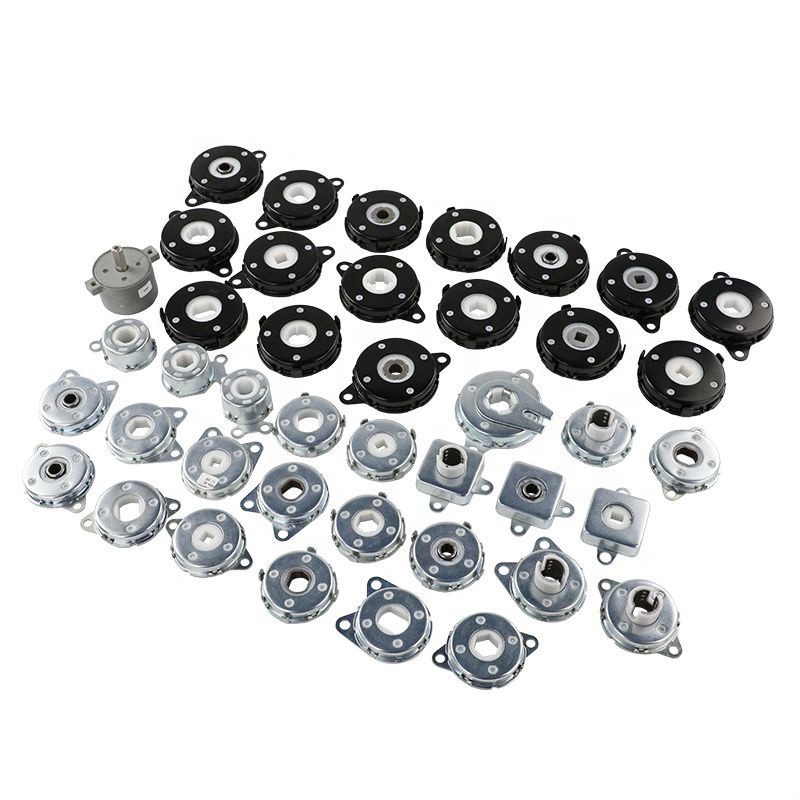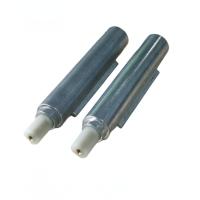2. Understanding the Customized High - Torque Metal Bidirectional
Rotary Damper
Working Principle
The customized high - torque metal bidirectional rotary damper
typically operates on a fluid - viscous or magnetic - fluid
principle. In a fluid - viscous damper, a viscous fluid, such as
silicone - based oil, is enclosed within a chamber. When the damper
is subjected to a rotational force, a piston or vane within the
chamber moves through the fluid. The viscosity of the fluid resists
this movement, creating a damping effect. The high - torque
capacity is achieved through the use of a larger - sized piston or
vane, a higher - viscosity fluid, or a more complex fluid - flow
design.
In a magnetic - fluid damper, a magnetorheological fluid is used.
This fluid changes its viscosity when exposed to a magnetic field.
By adjusting the strength of the magnetic field, the damping force
can be precisely controlled. For a bidirectional operation, the
damper is designed to provide damping in both clockwise and counter
- clockwise rotations. This is often achieved through a symmetrical
design of the internal components, such as the piston or vane, and
the fluid - flow paths.
Metal Construction Advantages
The use of metal in the construction of the rotary damper offers
several advantages. Metal materials, such as stainless steel or
aluminum alloys, are known for their high strength and durability.
They can withstand high - torque forces without deforming or
breaking, ensuring the long - term reliability of the damper. Metal
also has good heat - dissipation properties, which is important in
high - torque applications where heat can be generated due to the
friction between the moving parts. Additionally, metal construction
provides better resistance to corrosion, making the damper suitable
for use in harsh environments, such as those found in industrial
plants or outdoor equipment.
3. Customization for Diverse Applications
Adjusting Torque Capacity
One of the key aspects of customization is the ability to adjust
the torque capacity of the rotary damper. Different applications
require different levels of torque. In heavy - duty industrial
machinery, such as large - scale presses or conveyors, a high -
torque damper is needed to control the rotational movement of the
massive components. On the other hand, in more delicate
applications, such as in precision optical equipment, a lower -
torque damper may be required. The customized high - torque metal
bidirectional rotary damper can be designed with different internal
configurations, such as varying the size of the piston or vane, or
using fluids with different viscosities, to achieve the desired
torque capacity.
Tailoring to Installation Requirements
Customization also extends to the installation requirements of the
damper. The damper can be designed to fit into specific spaces and
mounting arrangements. For example, in automotive applications,
where space is often limited, the damper can be customized to have
a compact design without sacrificing its performance. It can be
designed with specific mounting holes or brackets to match the
existing mechanical structure of the vehicle. In aerospace
applications, the damper may need to be lightweight yet still
capable of providing high - torque damping. Customization allows
for the use of lightweight metal alloys and optimized designs to
meet these strict requirements.
4. Applications in Different Industries
Industrial Machinery
In industrial machinery, the customized high - torque metal
bidirectional rotary damper is used in a wide range of equipment.
In manufacturing plants, it is used in conveyor systems to control
the rotation of the rollers, ensuring smooth and consistent
movement of products. In large - scale printing presses, the damper
helps in precisely controlling the rotation of the printing
cylinders, resulting in high - quality prints. The high - torque
capacity of the damper allows it to handle the heavy loads and high
- speed operations typically found in industrial machinery.
Automotive Industry
In the automotive industry, the rotary damper is used in various
components. In the steering system, it helps in providing a smooth
and controlled feel to the driver. The bidirectional functionality
allows for damping in both left - hand and right - hand turns. In
the transmission system, as mentioned earlier, the damper protects
the gears from torque fluctuations, improving the overall
performance and lifespan of the transmission. The customization
options enable the damper to be integrated seamlessly into
different vehicle models, whether it's a small car or a large
truck.
Aerospace Industry
Aerospace applications demand the highest level of reliability and
performance. The customized high - torque metal bidirectional
rotary damper is used in aircraft control surfaces, such as
ailerons and rudders. It helps in providing smooth and precise
control of these surfaces, ensuring the safety and stability of the
aircraft during flight. The lightweight yet strong metal
construction of the damper makes it suitable for aerospace
applications, where every gram of weight matters. The ability to
customize the damper to meet the specific requirements of different
aircraft models and flight conditions is also a significant
advantage.
5. Conclusion
The customized high - torque metal bidirectional rotary damper is a
versatile and essential component for reliable operation in a wide
range of applications. Its ability to provide smooth and controlled
rotational motion, protect components from wear and tear, and be
customized to meet diverse requirements makes it a valuable asset
in industries such as industrial machinery, automotive, and
aerospace. If your business is involved in the design,
manufacturing, or improvement of mechanical systems that require
high - torque and bidirectional motion control, considering the
implementation of a customized high - torque metal bidirectional
rotary damper can significantly enhance the performance and
reliability of your equipment. Reach out to our team of experts to
explore how these dampers can be tailored to your specific needs.













